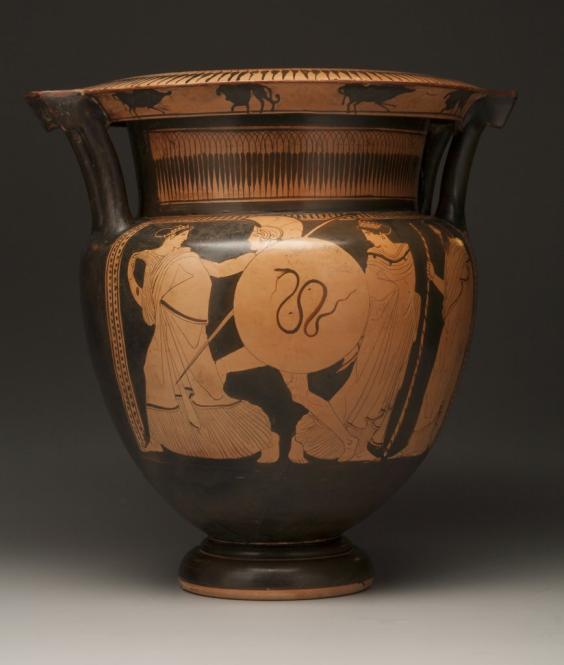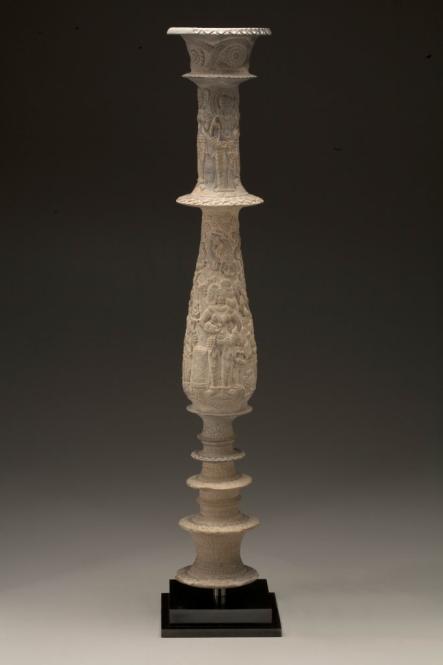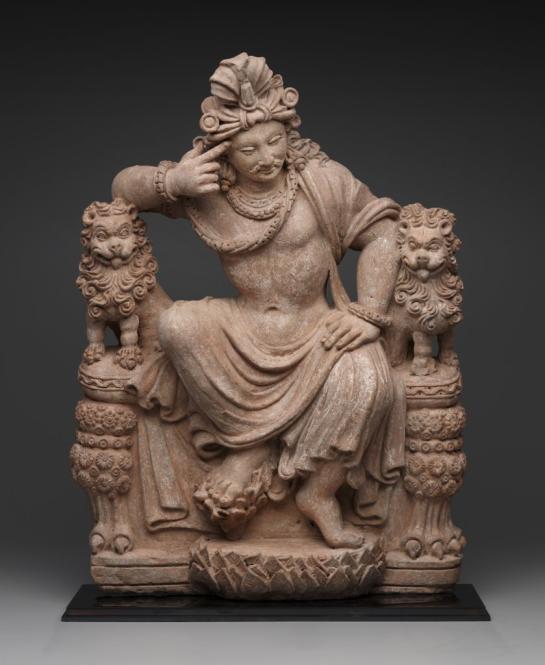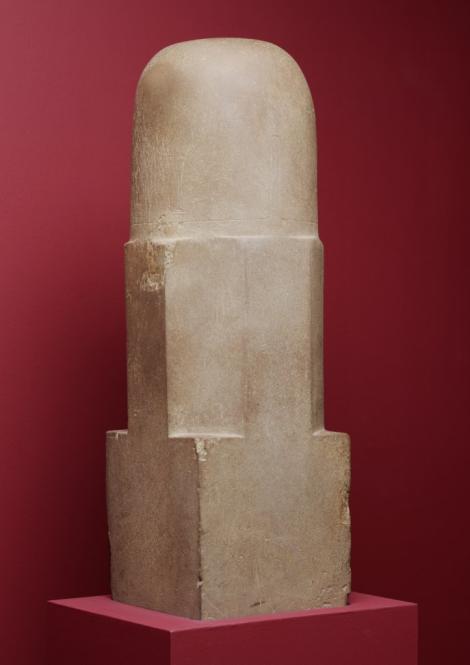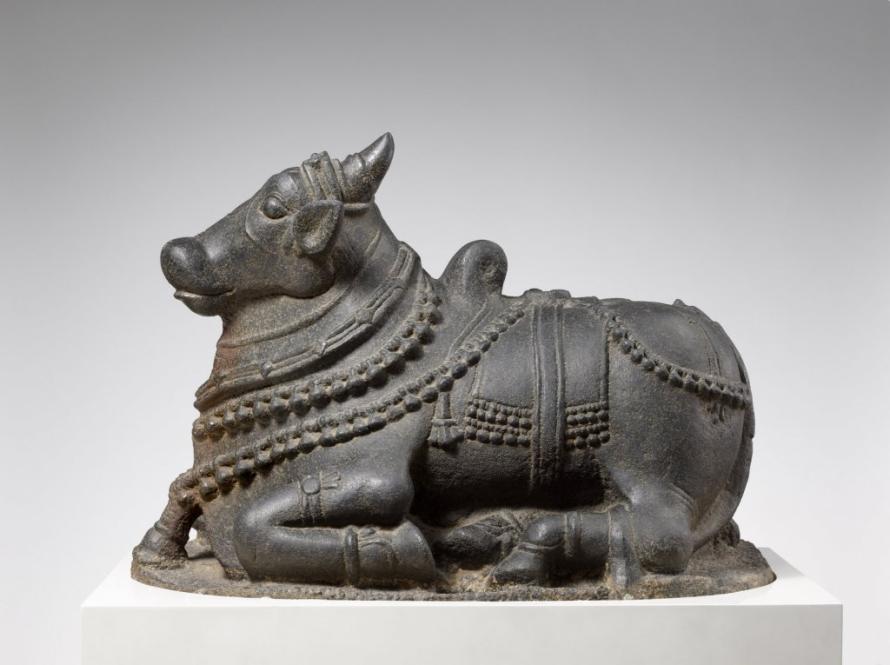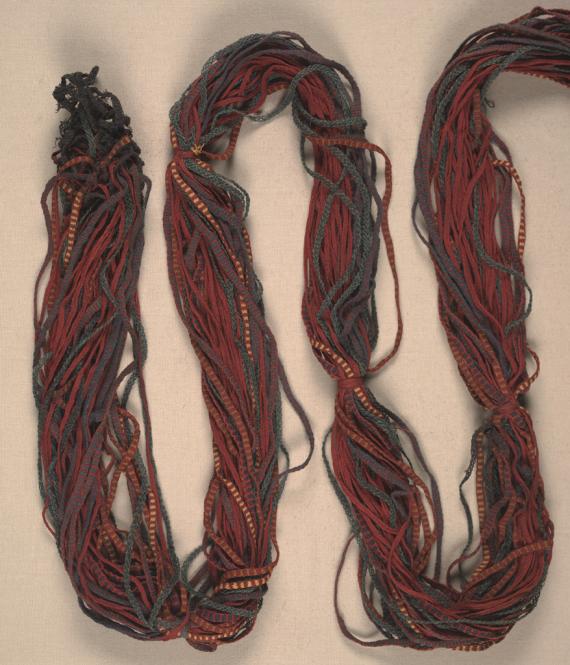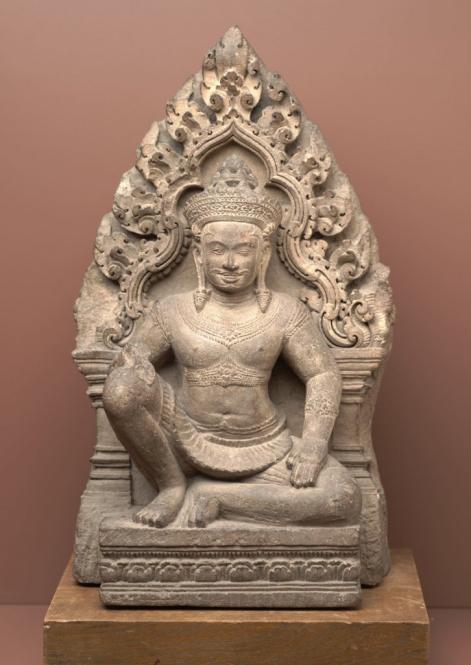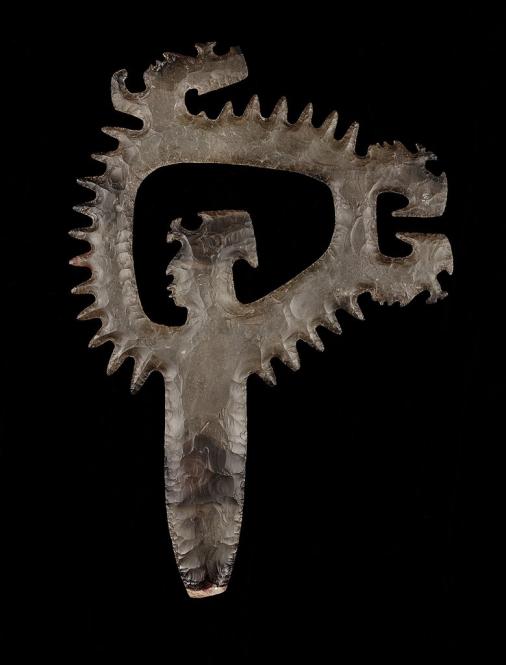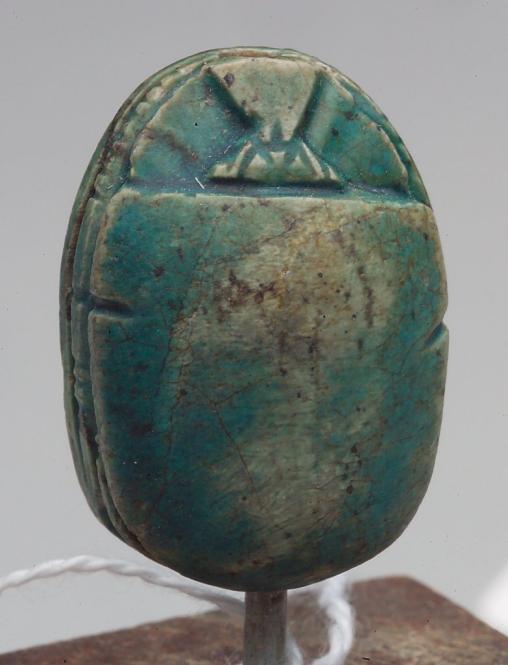2011.45
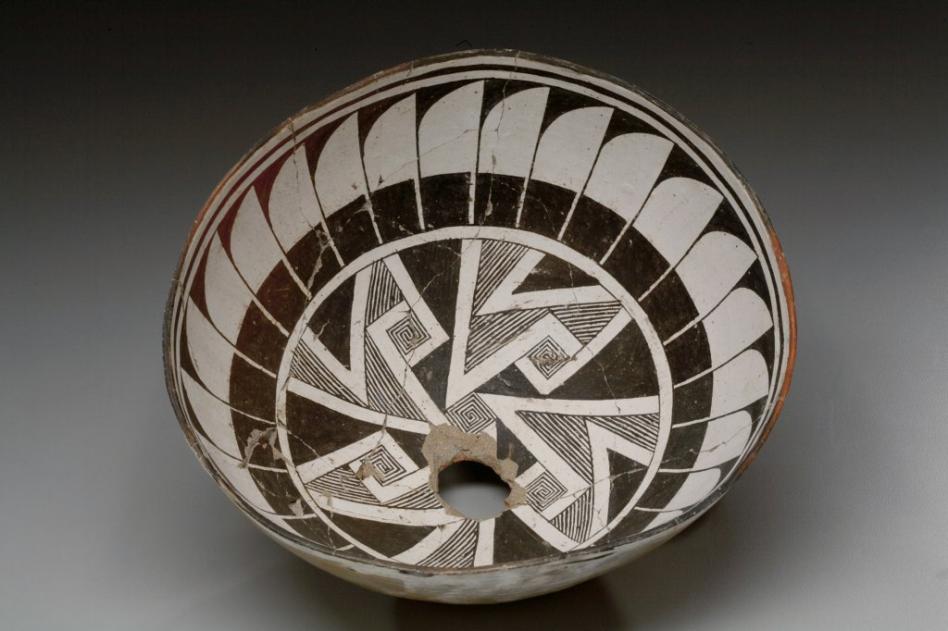
Object Title
Bowl with geometric composition and design of radiating feathers
Measurements
Height: 5 3/4 in. (14.605 cm.); Diameter: 11 3/4 in. (29.84 cm.)
Creation Date
1000-1150
Credit Line
Gift of Elizabeth and Duncan Boeckman
Museum Name
Culture
Country of Origin
Object Type
Materials / Techniques
Object URL
http://www.dm-art.org/
Provenance Information
By 1993, private collection, Dallas, Texas; thence to Dallas Museum of Art (accession date: December 16, 2011).
Exhibition Information
DMA, September 1993 to May 2001; Los Angeles County Museum of Art, The Road to Aztlan: Art from a Mythic Homeland, May 13, 2001 to April 28, 2002; DMA, May 2002 through the present.
Publication Information
Barbara L. Moulard, Within the Underworld Sky: Mimbres Ceramic Art in Context (Pasadena, California: Twelvetrees Press, 1981), plate 26 (b/w) and text p. 119.
Virginia M. Fields and Victor Zamudio-Taylor, The Road to Aztlan: Art from a Mythic Homeland (Los Angeles: Los Angeles County Museum of Art, 2001), obj. no. 93.
Virginia M. Fields and Victor Zamudio-Taylor, The Road to Aztlan: Art from a Mythic Homeland (Los Angeles: Los Angeles County Museum of Art, 2001), obj. no. 93.
Section of the AAMD Guidelines relied upon for the exception to 1970
Cumulative facts and circumstances
Explain why the object fits the exception set forth above
This work was illustrated and described in a publication from 1981. It has been on display at the DMA since 1993, except for its loan in 2001 and 2002 to an exhibition at LACMA. This Mimbres bowl has enabled the DMA to show with an actual example the influence of ancient ceramic design (here the motif of repeated stylized feathers) on the work of 20th-century pueblo potters: Plate with radiating feather design, by María Martínez and Popoví Da from the 1960s (DMA accession number 1987.342.FA) and Jar with water serpent and feather motifsI, by Vangie Tafoya, c. 1993 (DMA accession number 1997.47).
